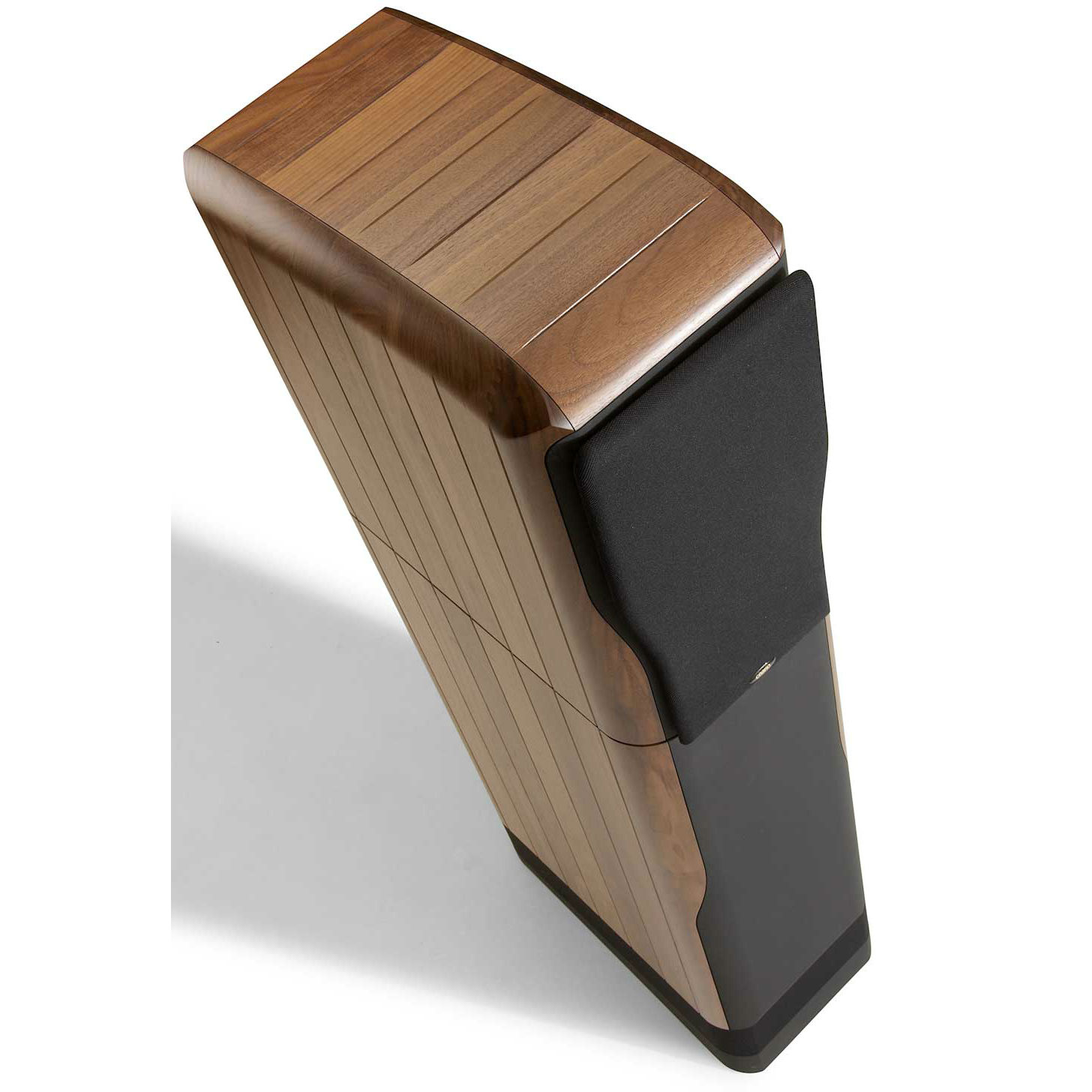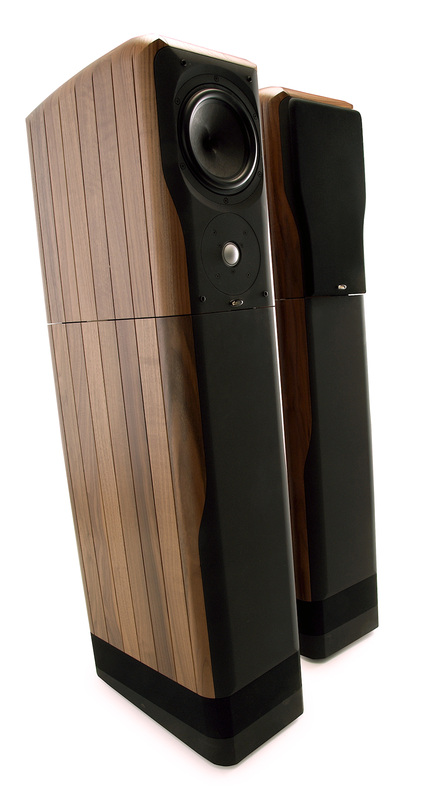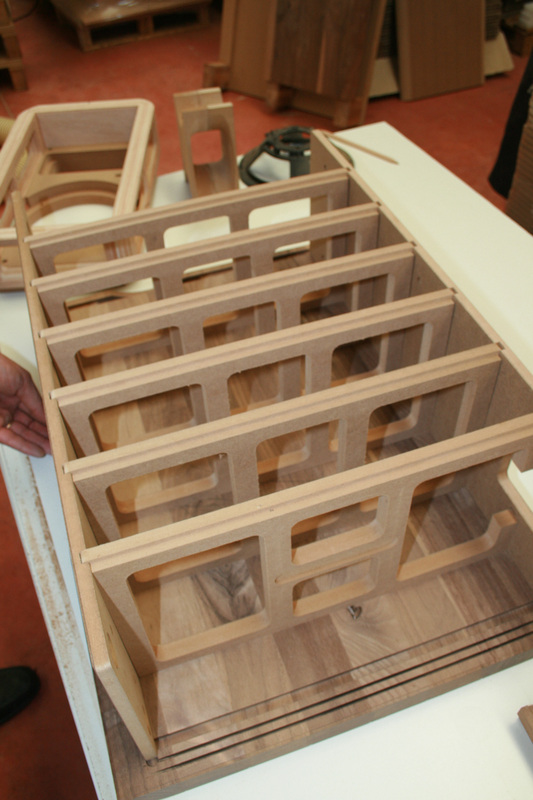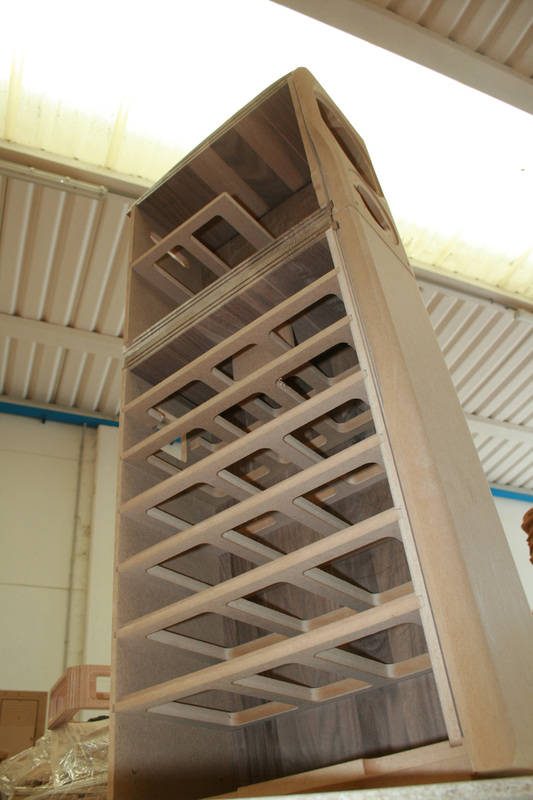|
|
Control and Power
The first three-way loudspeaker system able to control energy diffusion at low frequencies, using Chario Loudspeakers prioprietary Doublet Radiation principle. A decisive step ahead, laying the theoretical foundations for a different approach to sound issues in small environments.
Natural wood changes shape depending on ambient temperature and relative humidity. In other words, it adapts to climate conditions, generating outright tensions inside its fibres, which modify the macroscopic layout. This fact is well-known to master cabinet-makers, who actually adapt techniques when assembling the various parts of any prized solid wood cabinet.
Firstly, the right board has to be chosen and cut using precise criteria to avoid creating isolated and incompatible sections.
Secondly, the right storage area and drying process are defined for the rough wood. Thirdly and lastly, the sections are assembled in a precise order, to allow the moisture-absorbing capacity of each element to develop over time, settling to achieve soundness, not breakage. That’s why the CNC machines only cut and mill. e non .
The rest is time-honoured craftsmanship … |
Hidden Parts
As in Serendipity, the Sovran infrastructure is intended to stiffen the unit thus damping the mechanical vibrations and confining them inside the cabinet. There is another feature, however, that illustrates the complete extent of this original approach, which may seem complex in its realization, but is actually user-friendly in its basic principles. Just remember that the source with the most impact on any loudspeaker cabinet is the subwoofer. Vibration transmitted in this way to the structure has two negative effects: (1) the cabinet acts as an additional uncontrolled radiator; (2) the other speakers oscillate around their point of resting, modulating emission and reducing sound detail perception. The solution is simple and elegant: physically separate the subwoofer, which is why the cabinet comprises two vertical units, connected by four proprietary form and geometry puffers, extensively uncoupling the two cabinet masses. The image on the left shows the tensor surfaces, reflex duct and the structure that houses the two 200 mm subwoofers in the proprietary NRS isobaric configuration. The demarcation line between the upper and lower sections can be seen at the base of the tweeter bore. .
|
|
Five Degrees Vertical Tilting
The Acoustic Doublet proprietary theory that was developed for the Academy Sovran project allows even small-scale systems to use speaker/room interferences that will give listeners wave-fronts containing spatial information. This type of information is linked to the size of the source and length of wave emitted and it’s unlikely to be conveyed to the listener by bookshelf loudspeakers, since a physical distance of at least 1m is needed between sources. This is one of several reasons why Sovran adopts Reversed Woofer/Tweeter Alignment, which keeps the woofer as far as possible from the subwoofer and at the same time provides the best angle for modelling the energy response around the second crossover region.
Technical Data
|
Low Frequency Load
Vent Geometry
Configuration
Drivers
Sensitivity
Low Frequency Cut Off
Doublet Crossover
Mid-High Crossover
Rated Impedance
Size
Weight
Cabinet
Speakers Orientation
Listening Distance
Listening Layout
Side and Back Walls
Suggested Amplifier
Normal amping:
Suggested Amplifier
Bi-Amping:
|
Vented NRS Exponentional Hourglass
Bi-Dimensional Hyper-Exponential Hourglass Type
3way Reversed Vertical Alignement Free-Standing
1Tweeter 32 mm SILVERSOFT™ dome NeFeB motor
1Woofer 170 mm ROHACELL® Full-Apex™ Poly-Ring NeFeB motor
2Subwoofer 200 mm Natural Fibres Poly-Ring NeFeB motor
90dB SPL normalized to 1 m / 2.83 Vrms / de-correlated L/R pink noise within
ITU-R BS 1116-1 compliant listening room
35Hz @ -3 dB referred to C4 WETS
100 Hz
1180Hz / LKR4 Derived (Δf=45°)
Modulus 4 Ω (min 3.0) Argument ±36°
1220 x 240 x 440 mm (H x W x D)
47 kg
Solid walnut or solid cherry and hdf. The structure comprises two cabinets: the lower contains two subwoofers; the upper contains one mid-woofer, and one tweeter. The two wood cases are separated by four cylindrical proprietary-engineered elastometric puffers acting as vibration decouplers to dissipate mechanical energy by orthogonal elongation
Speakers should be titled inward facing the listener
Optimum speaker-listener distance > 3.0 m
A carpeted floor in front of the speakers is recommended
Should be at least 1m away from the speaker front baffle
180W / 4 Ω Average Power
Run the cable from the power amplifier to the lower terminals of the subwoofer binding post, then connect upper terminals to the mid-high unit binding post by means of the short cable provided with the speakers
120W / 4 Ω Average Power
Run the cable from the power amplifier to the lower terminals of the subwoofer binding post leaving upper ones idle. Repeat to connect the power amplifier to the mid-high unit binding post (two terminals only )
|
|





 סמן כדי להגדיל
סמן כדי להגדיל




